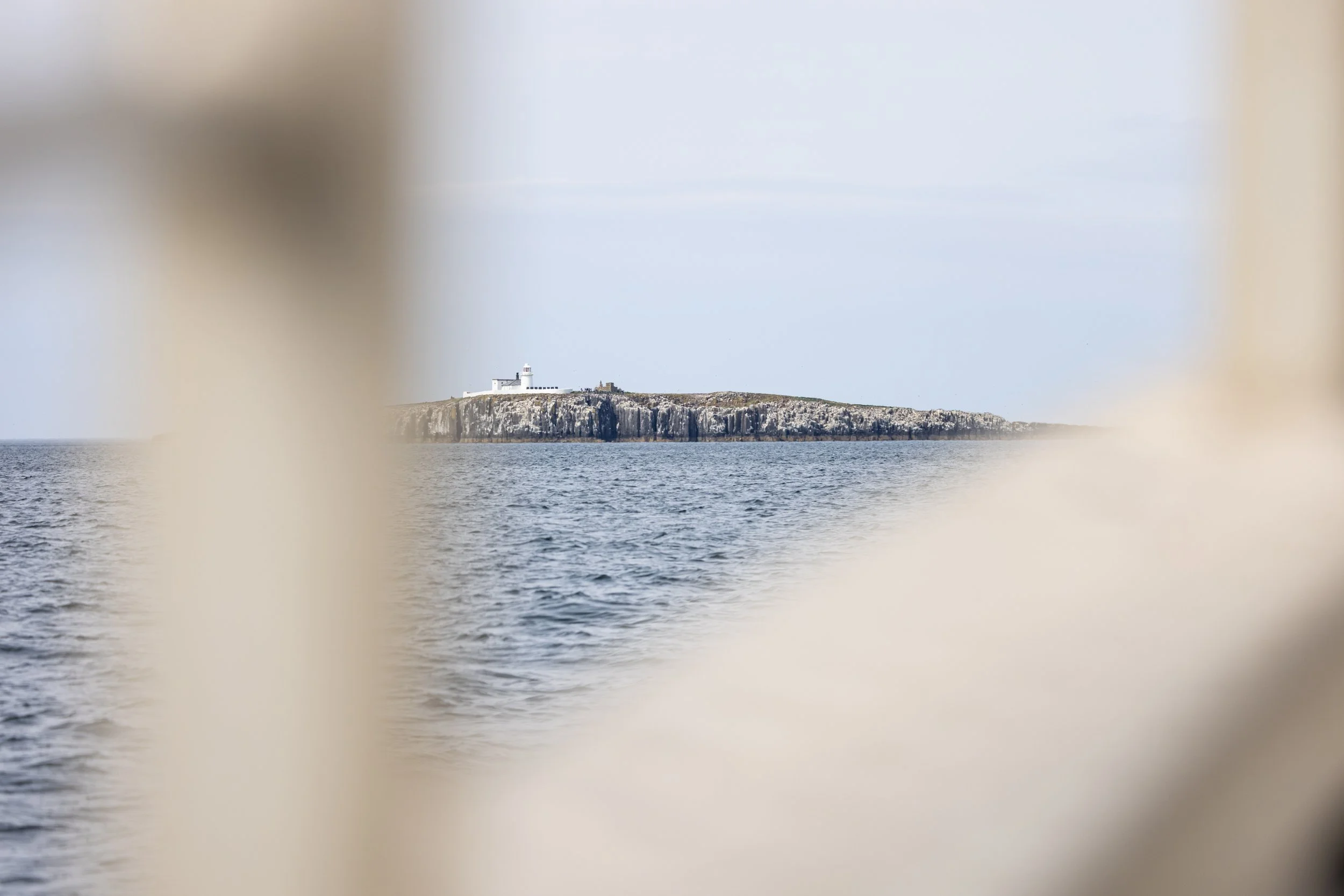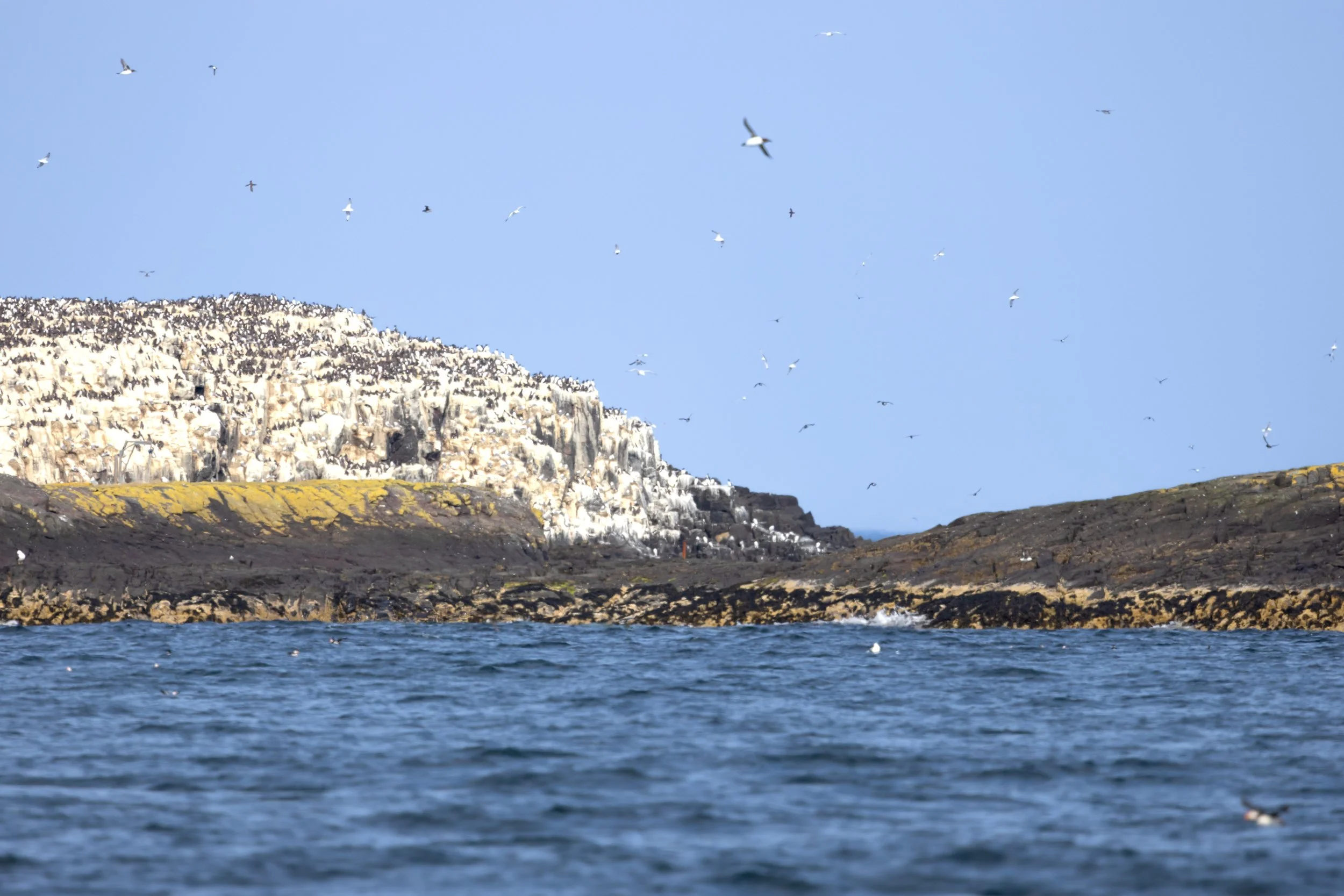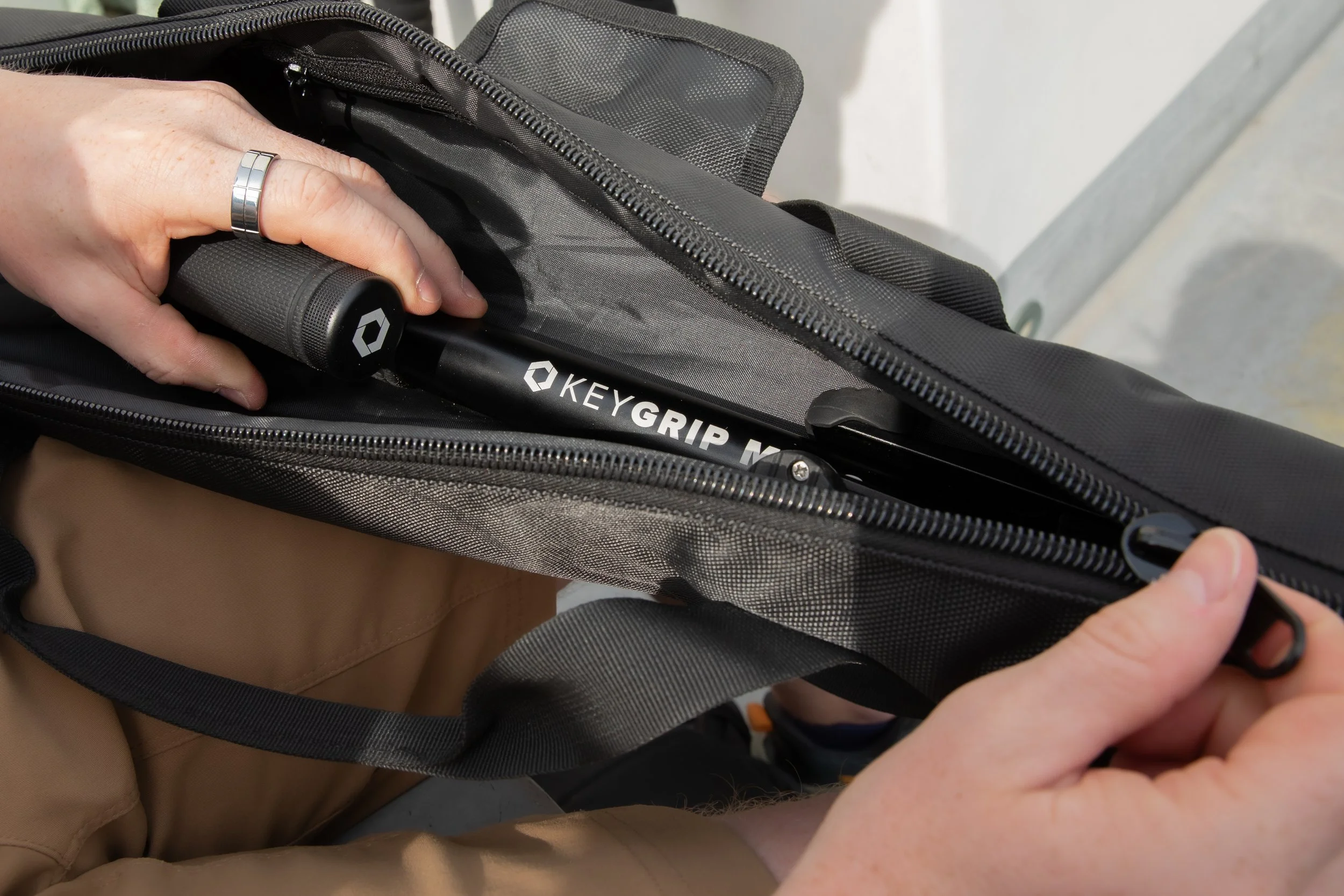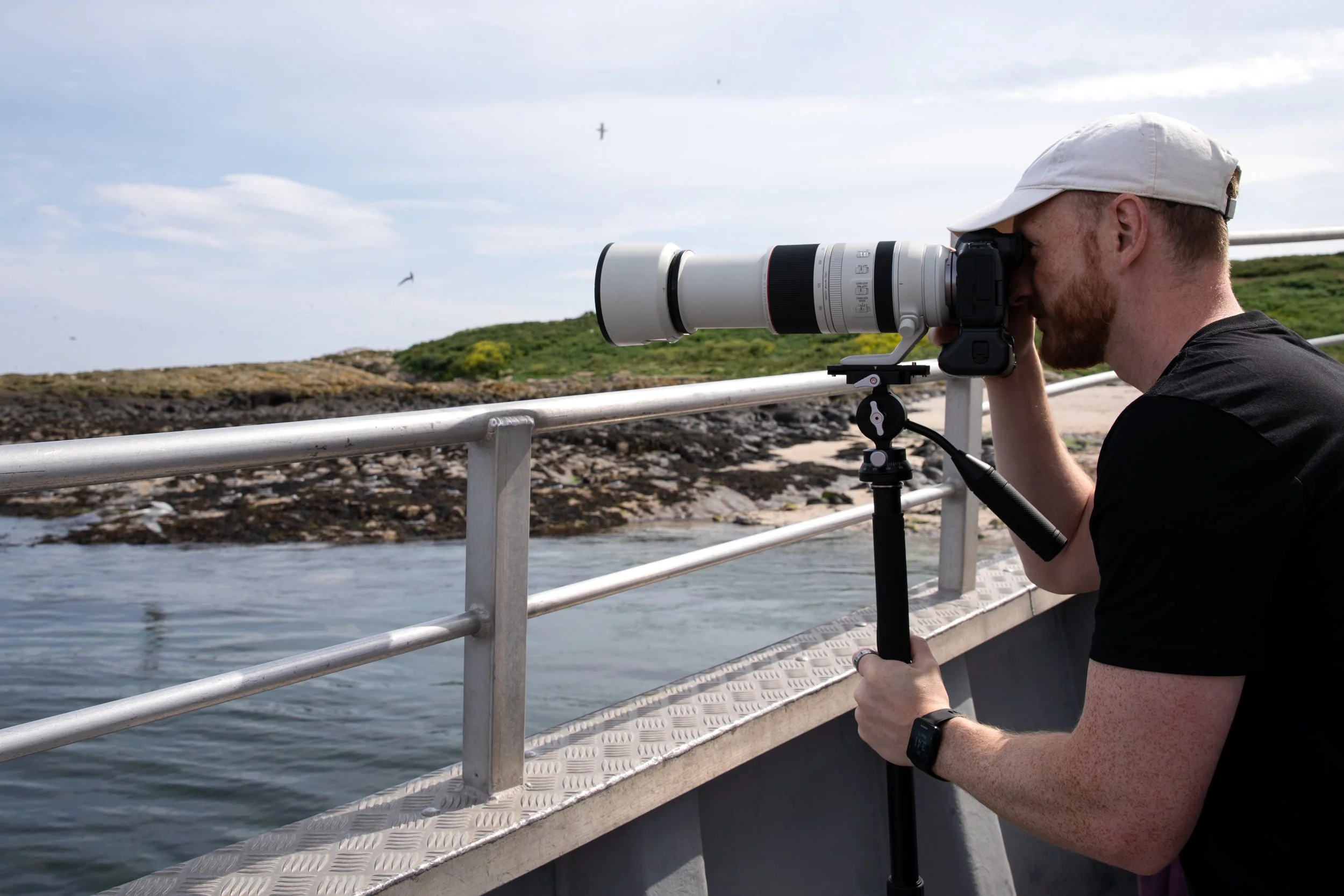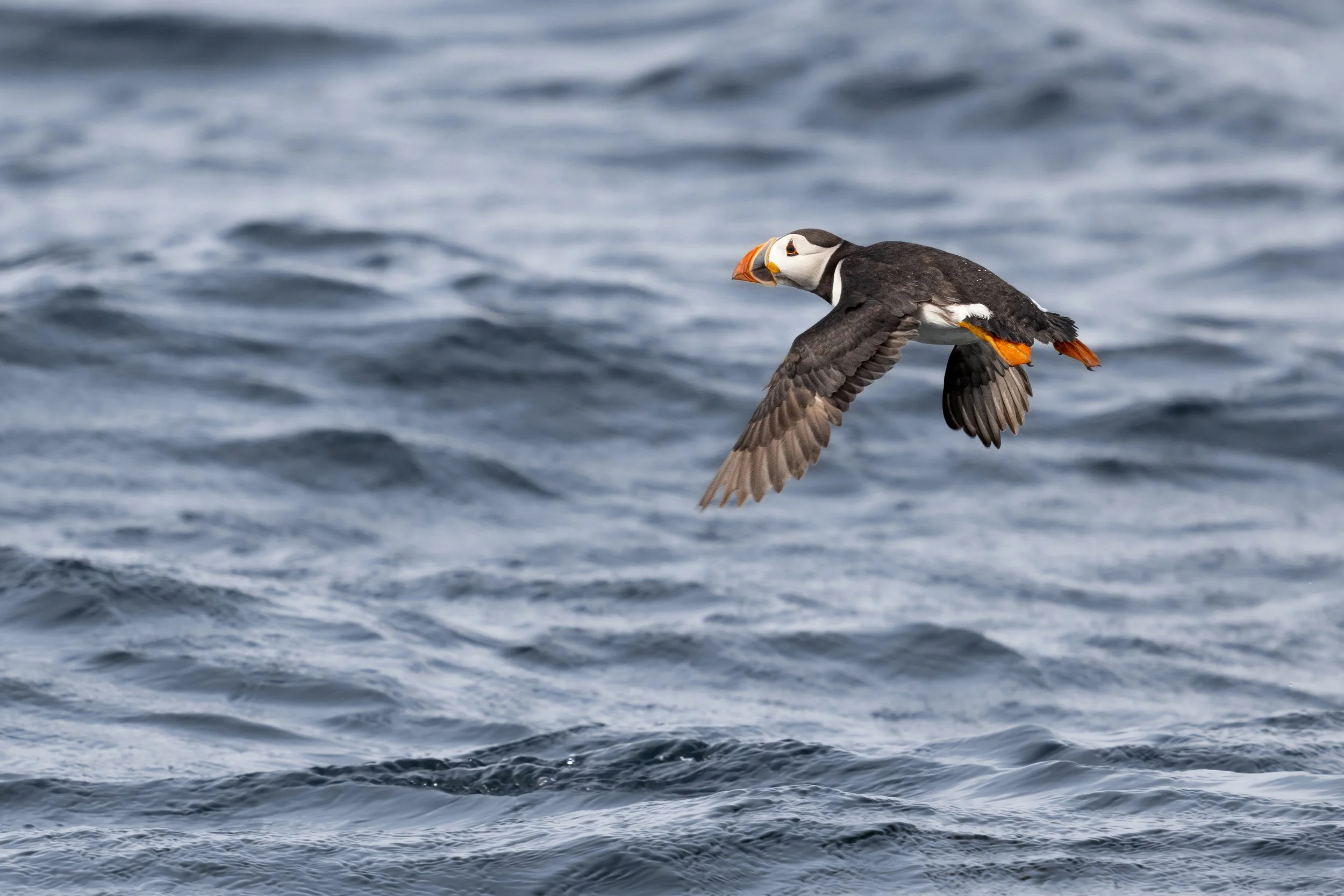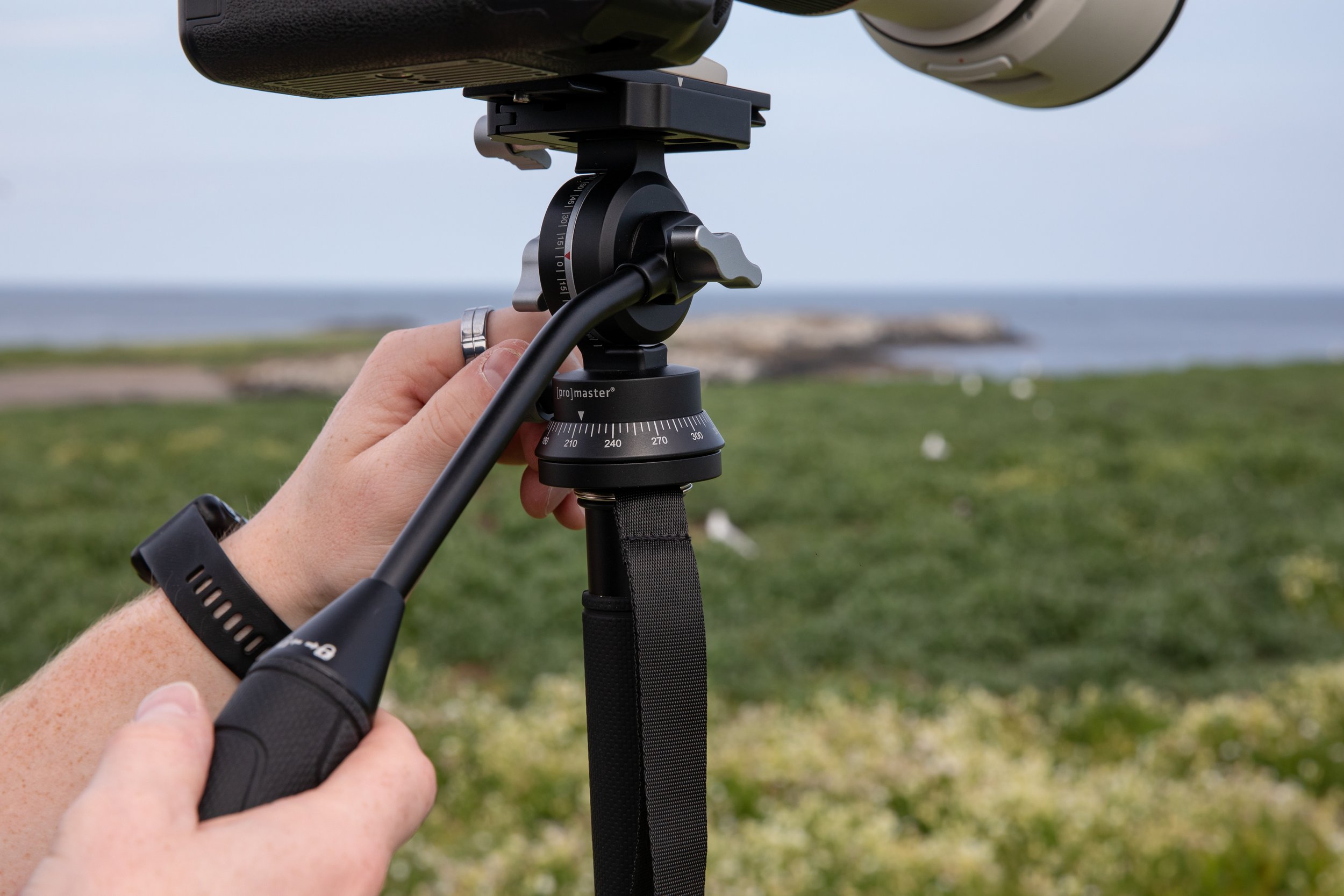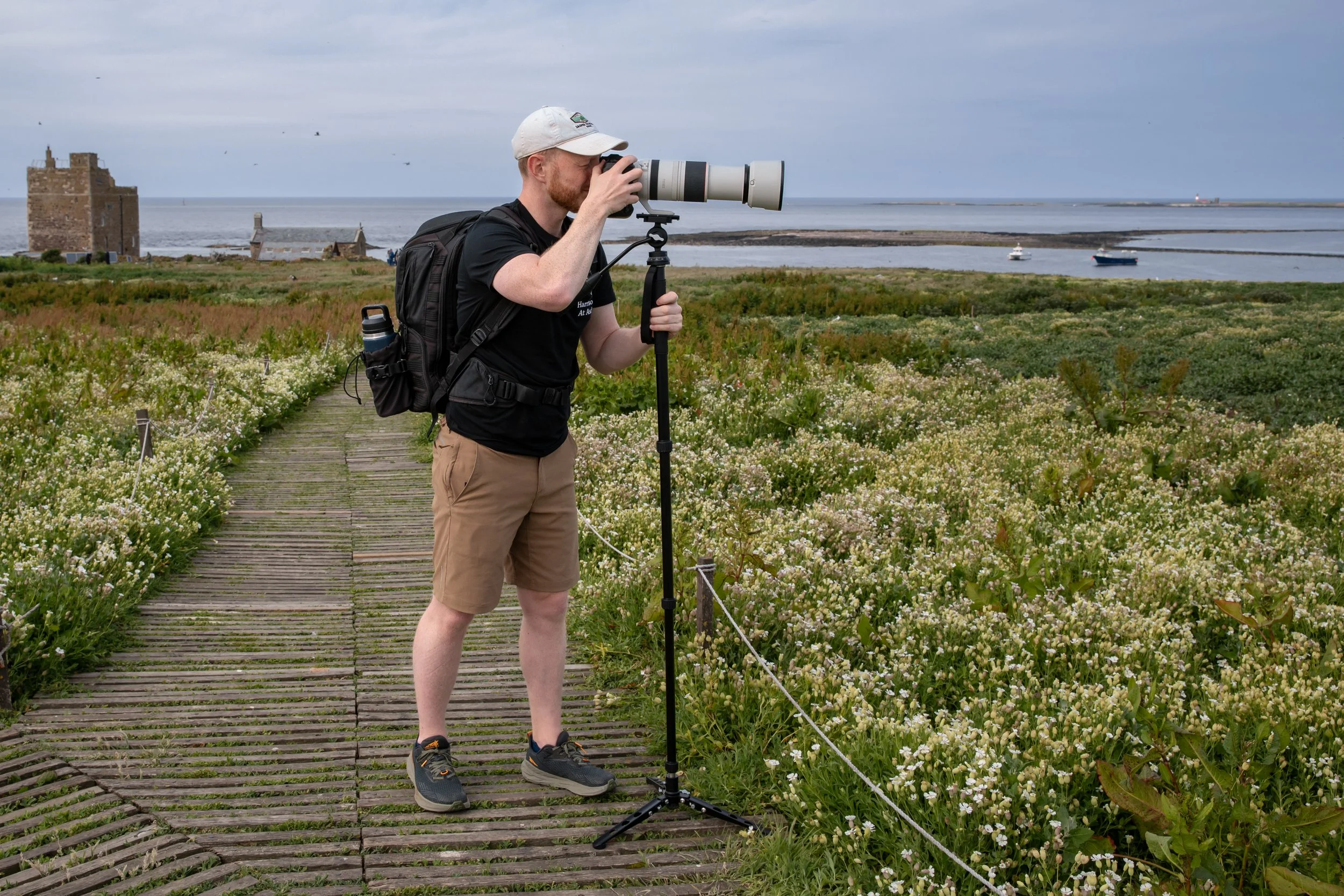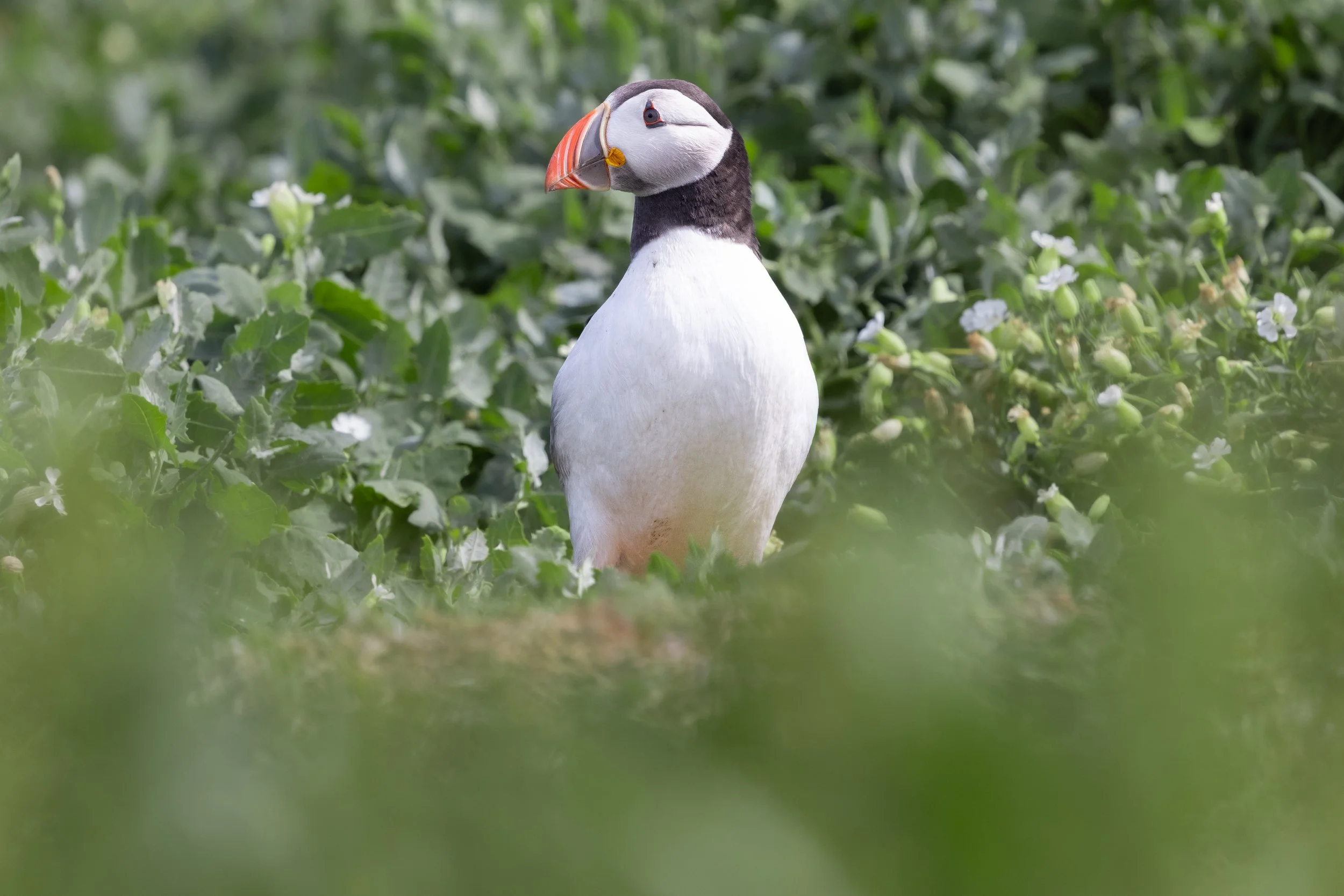Wings Over the Farnes: Puffin Photography with ProMaster’s Key Grip Monopod
Setting Sail to The Farne Islands
As a wildlife photographer, I’ve had the privilege of working up close with everything from grizzly bears in British Columbia to whale sharks off the coast of Western Australia. My work takes me into wild, unpredictable environments, and I’ve always loved the challenge of capturing these powerful moments in nature.
For me, wildlife photography is about more than just creating sharp, well-lit images, it’s about capturing moments that feel meaningful. I want my work to reflect not just what something looked like, but what it felt like to be there. Whether it’s a close-up calm expression or the chaos of the action, I’m always looking for moments that tell a deeper story about the wildlife and the places they inhabit.
Even more important than the shot itself is remaining as unobtrusive as possible, allowing the subject to continue its natural behaviour, undisturbed. My approach to wildlife photography and filmmaking always begins with respect: respect for the animal, and respect for the landscape. The perfect shot will always be a bonus, never the priority.
In June this year, I headed out to the breathtaking Farne Islands, off the Northumberland coast, England. The islands consist of around 15-20 smaller islands depending on the tide. These remote, rugged islands are managed by the National Trust and are a magnet for wildlife lovers throughout the year.
But the real spectacle comes during seabird breeding season, from late April through to July each year, when 200,000 seabirds breed here. A staggering figure that gives you an idea of the noise, energy, and motion surrounding you as soon as you arrive.
From Arctic terns and shags to razorbills, kittiwakes and guillemots, the cliffs and skies are packed with life. But my main goal for this trip was to photograph the iconic Atlantic Puffin, a favourite with photographers and wildlife lovers alike. The puffins were out in force, zipping past with beaks full of silver sand eels for their chicks, known as pufflings.
The day involved photographing puffins both from the boat and on foot across the Inner Farne, making it the perfect opportunity to field test an exciting piece of gear: ProMaster’s Key Grip Monopod.
A Balancing Act – Boats, Rocks, and Dive Bombing Terns
From the sway of the boat to the uneven rock surfaces of the Inner Farne, this shoot required a kit that could keep up. I was working with my Canon R5 and the Canon RF 100–500mm lens, a combo that gives excellent reach and sharpness but does carry some weight over the course of a long shoot on a sunny day.
The day demanded versatility from quickly switching from tracking fast birds in flight, to holding steady for still portraits, to shifting position as the light changed. All while trying to avoid tripping on the rocks or getting dive bombed by nesting Arctic terns, the Key Grip definitely helped me stay steady amongst all the chaos.
The Kit That Kept Up – ProMaster’s Key Grip Monopod
The Key Grip Monopod was a brilliant companion throughout the day. It gave me just enough support to keep the camera steady during slower paced moments, while still being light and mobile enough to keep up with the action.
A few features that really stood out:
Fold down tripod base with ball joint – Provided excellent stability when I needed to stay in one place, especially on rocky areas. The ball joint made smooth repositioning easy. Quick to pop the legs back up when it was time to move.
Fluid video head – Allowed for smooth panning, which was a huge help when tracking puffins in flight and trying to keep subjects in focus during those fast moments.
Extendable control handle with integrated hex key storage – Handy for occasional video work, and easy to shorten when switching to high tempo stills. Having the hex key stored inside the handle meant quick field adjustments are fast and easy.
Build quality – Really solid. All the knobs and locking points felt intuitive and reliable, giving me full confidence while reacting quickly in the field.
Comfortable grips – True to its name, the Key Grip has a secure, well-made handle that was easy on the hands even during long stretches of shooting.
Carry bag – Durable, nicely padded, and made it easy to pack in and out for the day.
Reflections From the Farnes
There’s something pretty magical about being surrounded by so much life, puffins landing just feet away, being out on the ocean, and the buzz of activity all around. It’s the kind of shoot that reminds me why I love wildlife encounters and shoots like this.
The Key Grip Monopod was the ideal tool for the job, supportive without being restrictive, rugged yet not overly weighty, and clearly designed with real world use in mind. The monopod handled the weight of my camera and lens combo really well, and gave me confidence when working in fast moving, unpredictable shooting conditions. It’s definitely earned a spot in my field kit going forward.
George Carr
From Australia’s vibrant wildlife and marine ecosystems to Canada’s rugged wilderness and iconic large mammals, George has honed his skills across a range of photography disciplines, including landscapes, wildlife, and underwater imagery.


